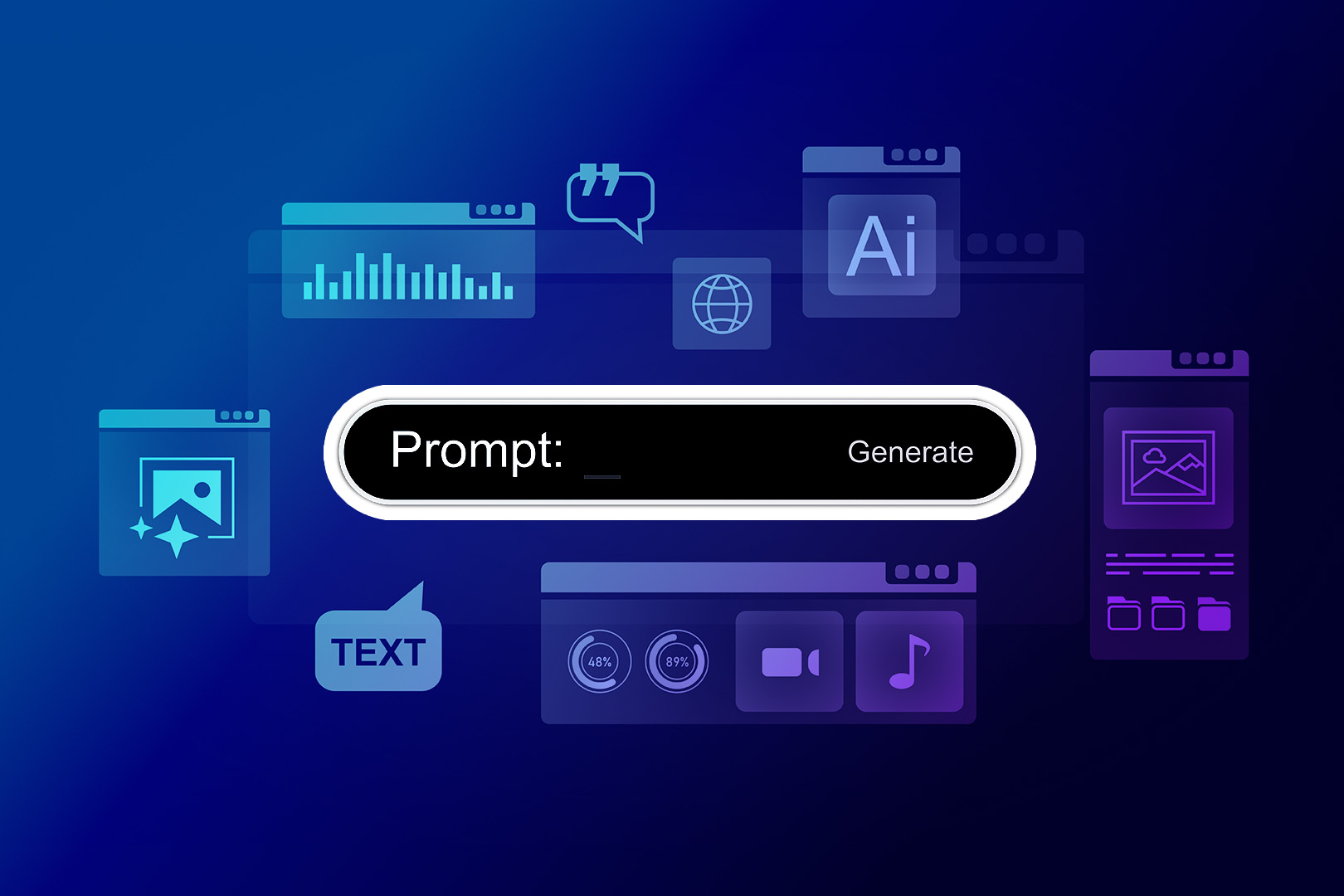
How to Create an Ideal Customer Profile for B2B Leads (ICP Guide)
Who are you trying to sell to? Occasionally, even sales teams of startups with millions of dollars in funding struggle to answer this question.
They may loosely know their “target customers” (which includes all companies that might be interested in their products or services). Enter: Our guide to create an ideal customer profile.
However, that’s rarely enough for account-based marketing campaigns, where you focus on selling to accounts instead of leads.
Creating an ideal customer profile (or ICP) can align your sales and marketing efforts to generate high-quality sales leads. It will also help in dealing with key decision-makers strategically, fine-tuning your messaging, and fulfilling your sales goals.
Whether you’re a sales manager of a small team or a director at a big company, by the end of reading this post, you’ll be able to create your ICP. Let’s start with the basics.
What is an Ideal Customer Profile?

It’s basically a description of a fictitious organization (company, government agency, or non-profit organization) that gets significant value from using your product/service and also provides significant value to your company. It's the kind of customer you want and the kind of customer that wants to buy from you.
It’s derived from your target market, which is generally a core set of customers who can benefit from your product or service.

Firmographic data points to describe an ICP can include your target account’s location, company size, funding status, industry, etc.

An ICP is generally used in a B2B setting, but you can also use it in conjunction with a buyer persona. As you’ll see later in the article, it defines the attributes of the individuals you’re selling to, such as their job titles, demographics, etc.
There are different methods for developing your ideal customer profile, but typically the best one to look is your customers—define what your most successful customers have in common, and you’ll be off to a great start.Let’s further examine three parts of this ideal customer profile definition.
How Does This Imaginary Organization Provide Value to Your Company?
First and foremost, they pay you for the value you provide them. But there are several other secondary ways the ideal customer could benefit your company.
They might:
- Refer you to other companies
- Become advocates for your company
- Give you access to resources to grow your business
- Have a higher lifetime value
- Provide valuable insights that drive customer intimacy and more revenue
Retention of this type of customer is a breeze. They're pleasant to deal with and don't require excessive amounts of support.
What’s more?
They might let you use their logo and provide a testimonial for your marketing and sales collateral. Their constant and never-ending stream of constructive feedback and appreciation will make running your business worthwhile.
Having listed all these, the most important indicator of value this ideal buyer provides to your company is the amount of money they pay you!
How Does This Imaginary Organization Get Value From Using Your Product/Service?
Among a thousand ways you help your ICP are:
- Make more money
- Reduce expenses
- Alleviate their pain points
- Increase productivity and raise their morale
- Help them better serve their customers
- And become more successful
But ultimately, B2B sales is about how you affect the bottom line. If your solution doesn't directly correlate with profits or expenses, you should be able to demonstrate how it will indirectly affect the organization's finances.
Base Your Fictitious Organization on Solid Facts and Real Data
You can’t just fabricate an ideal customer profile out of thin air. Instead, you systematically identify shared traits and characteristics of real customers who succeed with your solution. We’ll talk in more detail about how to do this later in this post, and we've created an ICP kit that guides you through the process: Profiler.
What is a Buyer Persona?
A buyer persona is a semi-fictional representation of the individual that buys your products or services. You research your current customer base, find your highest-value customers, and identify their common traits. A buyer persona profile can include demographic info, objections, pain points, goals of the person who will buy your product or service, etc.

While they are a common part of the B2C environment, even B2B sales reps ultimately sell to individuals. So on top of an ICP, they will find buyer personas of each stakeholder involved in the decision-making process pretty useful.
Learning about these important individuals of your target accounts that are involved in the buying process can help:
- Tailor your outreach to potential customers
- Map out content and craft your messaging to their individual needs,
- Inform your marketing strategy and sales process
- And close more deals

Below is a quick graphic that demonstrates the difference between the two, with an example. But consider reading our post on ideal customer profile vs. buyer persona to learn their differences thoroughly.

Don't underestimate the power of B2B buyer personas in shaping your marketing strategy. Explore our article to learn how to create detailed and data-driven personas that inform your marketing decisions.
Psst! Want to revolutionize your B2B conversions? Explore the B2B Sales Funnel insights now.
How to Create an Ideal Customer Profile for Your Sales Team
In this section, let's walk through the process salespeople can use to create an ideal customer profile. While many consultants and experts turn this into a complex undertaking, keep in mind that defining your ICP is essentially about one thing: understanding your customers better.
Step 1: Make a List of Your Best Customers
Create a list of your ten best current customers. Then you want to know two numbers:
- How much is the customer paying you?
- How much value is the customer getting from using your solution?
- (You should not assume a number here—instead, ask your customer. Ideally, call them and ask them directly. But if that doesn't work, you can also ask them via email or as part of a survey.)
The second number they tell you should be a multiple of the first number. So if your offering has a price of $100 a month, they should be getting at least $200 of value in return from using your solution.
It’s not enough for them to pay for your solution. They need to actually get significant value from it and be aware of the value derived from your solution.
Sell to Your Customers in Three Stages
Don't assume that this magically happens by itself. You should take charge of making this happen by selling them in three stages:
- Before they buy, you need to sell them your value proposition. You need to convince them that your solution has the potential to make them successful and is worth investing in.
- After they buy, you need to sell them on implementing your solution. It’s not enough that they paid you for it — they have to invest time and resources into utilizing it to create the promised value.
- After they've received the value, you need to sell them on realizing that it’s your solution that has created the value.
You need to ensure that the people in the organization are aware of the value your solution has created. This is not something that happens by itself — it needs to be engineered and directed. (Especially in large organizations, where there will always be individuals and departments eager to claim credit for achievements.)
In our own company, for example, this is the responsibility of the Customer Success team. They stay in touch with our priority accounts, identify opportunities for increasing the value these customers get from using our CRM software, and ensure that the value Close creates for their organization is recognized.
Should your business function within the B2B sphere and necessitate a reliable CRM solution, we encourage you to explore our comprehensive article detailing the best B2B CRMs available. This valuable asset will guide you in selecting the right CRM that aligns with your company's requirements, empowering you to foster strong customer relationships and achieve successful deals.
Don't have 10 ideal customers yet?
If you can’t come up with 10 customers, drop everything else and focus on getting these 10 ideal customers. Either support some of your existing customers over to the top until they reach that level of success with your solution or bring in new companies and onboard them to ensure their success with your solution.
Step 2: Find Common Attributes
Now look at this list of your ideal customers, and ask yourself: what do they have in common?
This is where you have to brainstorm and do your research. Dig deep into your customer data and come up with lots of attributes for each of these 10 companies so that you later find commonalities.
You want to be creative and approach this from different angles, even if some of them might not seem relevant or meaningful at first. The goal at this step of the process is to come up with an extensive list of attributes first.
For example, do they all do business in the same geographic area? Are they all selling to a similar subset of customers? Is there a particular role or department in the company that makes it possible for them to get more value from your product?
Knowing as much as you can about your most successful customers will help you in the next step.
Step 3: Prioritize Attributes of Your Ideal Customers
In the prior step, your goal was to develop a long list of attributes that your best customers have in common. The next step is to identify the ones that matter.
An ideal customer profile is only useful if it provides clarity. Overloading it with a set of 35 attributes will do you no good. This shouldn't become an exercise in memorizing company traits. Instead, it should help everyone in your company understand and envision who the ideal customer is, and is not.
Aim for somewhere between five to ten main attributes to define your ICP.
Step 4: Fill Out the ICP Template
We've created a simple template for you to help guide you and your team through this process.
Once you have your ICP criterion down, you can input it in a CRM like Close using Custom Fields. For example, you might include:
- Company size
- The product plan or service they’re interested in
- Industry
- Funding
- Location
You can add these Custom Fields to new leads as they come in, or you can bulk edit your existing leads to include these fields.
Want to make this even smoother? Try using a data enrichment tool like LeadFuze, Clearbit, or Lusha. Then, you can import the data directly into Close.
After that, you can use these criteria to score your leads and prioritize your team’s efforts according to how well they match your ICP.

Your Ideal Customer Profile Template (Free Download)
The best way to go about this is to identify which questions are worth asking your ideal customers. Here are some ideas to get you started in different directions:
- What’s the size of the organization? (Measured in revenue, number of customers, number of employees, etc.)
- What’s the size of the relevant department?
- Do certain job titles exist in the organization?
- Which industry or niche are they serving?
- From which academic institutions did they recruit their employees?
- Which companies have current employees previously worked at?
- Do they largely promote people from within the organization, or do they mostly bring in experienced leadership from outside? (e.g., in the first case, they might value training their personnel higher, versus in the latter, they have more demand for recruiting services)
- How long have they already been in business?
- What’s the number one reason that would prevent them from buying your solution?
- What’s the number one reason that would make them decide to buy your solution? What makes your offer appealing to them?
- What goal do they want to achieve with your solution?
- How are they currently trying to achieve this goal?
- Why did they decide to try this approach? (What was the decision-making process that led to this choice?)
- What’s the main pain point with their current approach?
- What are the three most important features for them?
- What’s their buying process like?
- Did they ever make a purchasing decision to fulfill the need? If yes, how often did they already do this?
- Which industry publications, blogs, or websites are they following?
- What kind of tools or services are they using?
- Where are they located? (Geographic region? Rural vs. urban area?)
- Any recent personnel changes? Restructuring? Other recent events in the company?
- Seasonal or temporal factors? (e.g., Spending remaining budgets before the end of the year? Selling remnant advertising before going to print? Having to meet goals before the end of the quarter? Low demand during summer?)
- How have they been affected by changes in the economy or other developments outside their sphere of influence?
- Do they use LinkedIn? What other social media platforms do they hang out on?
- What kind of usage patterns do they show?
- What’s their culture like, and what values do they practice?
- How do they position themselves in the market?
- What words do they use to describe their product or service?
- In which directories do they get listed?
- Which associations or trade groups are they members of?
- Are they more driven by a desire to be innovative or to reduce risk?
- Which trade shows or industry events do they attend?
- How technically sophisticated are they?
- Where do they source their materials?
- What distribution channels do they use?
- What’s their awareness stage? Do they already know your product and aren’t motivated enough to buy? Do they know their desired end result but not that your solution can deliver it? Do they know that they have a problem but have no idea how to solve it? Aren’t they even aware of the problem and need to be educated that they have a tremendous opportunity for improvement?
As you can already see, there are hundreds of questions B2B companies could be asking, and it's impossible to provide an exhaustive list. That doesn't mean you should have an answer for all of these.
Don't get stuck in generic templates that define your ideal customer in terms of broad demographic, psychographic and behavioral attributes. These fill-in-the-blank customer profile templates are no basis for creating highly targeted lead lists.
Get together as a team for a couple of hours and brainstorm which questions are relevant to your ideal customers.
Want to get started with your own Ideal Customer Profile?











